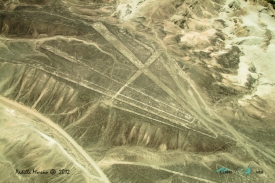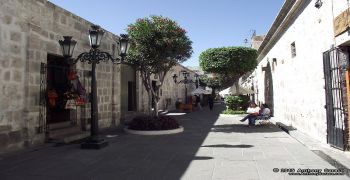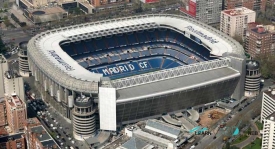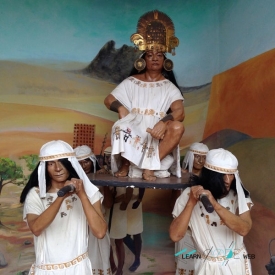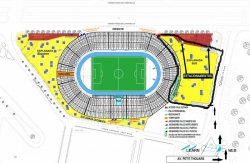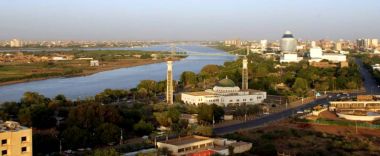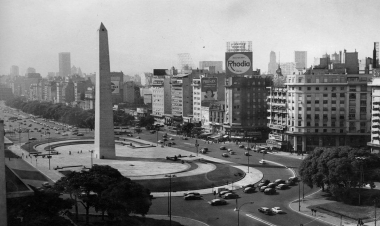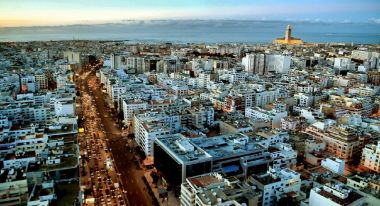ABOUT Bostancıbaşı Bridge
It may seem that a city as rich in monuments as Istanbul stone bridges erected in Ottoman times should abound. Meanwhile, it turns out that it is very difficult to find examples of such Ottoman bridges near the historical centre of the city, as in fact, only one such structure has survived. This is the Bostancıbaşı Bridge, located in the Asian part of the city, in the Bostancı neighbourhood of the Kadıköy district.
Of course, near Istanbul, there are wonderful examples of historical stone bridges, erected in the 16th century by the greatest architect Ottoman of that era, Mimar Sinan. However, they are far from the centre, in Küçükçekmece, 17 kilometres west, in Büyükçekmece - 35 kilometres west, and Silivri, 62 kilometres in the same direction. Meanwhile, the Bostancıbaşı Bridge is only 11 kilometres away from the historical centre, but it is located on a different continent than the other bridges. This bridge is not particularly impressive structure as it is less than 40 meters long, but due to the rich history associated with this location, it is worth taking a closer look at it.
The name of the bridge and the neighbourhood where it is located may suggest that there were once vegetable gardens in this area because the Turkish word bostancı literally means a vegetable-cultivating gardener. In fact, the title bostancı hid the elite members of the Sultan's Guard, a subdivision of the Janissaries who could be compared to praetorians protecting Roman emperors. Both these formations sometimes contributed to the change of the person holding the highest position in the state. The title bostancıbaşı belonged to the commander of this guard and this title is now commemorated by the bridge in Kadıköy.
In the Ottoman times, Istanbul already stretched far, both on the European and the Asian sides. At the time, the city borders were marked by two bridges: from the west, it was a bridge in Küçükçekmece over the stream connecting Lake Küçükçekmece and the Marmara Sea, and from the east - the Bostancıbaşı Bridge over the Çamaşırcı Deresi stream. The name of this stream means the Laundry Stream, but sometimes it is also referred to as Bostancı Stream. The city limits on both sides were closely guarded by bostancı units, which had wooden police stations at their disposal, called the Turkish derbend. For this reason, the Bostancıbaşı Bridge was called Cisr-i Derbend for a long time. The station building was unfortunately demolished in the 1980s.
What was the control at the entrance to Istanbul like? In the first half of the 19th century, to regulate the city's rapid expansion, a special type of national passport, mürur tezkeresi, was introduced, without which it was not possible to cross the borders of Istanbul. It was issued by local authorities in the town of the traveller's origin, and the purpose of his visit had to be clearly defined in this document. Those caught attempting to infiltrate the city outside the checkpoints were severely punished.
The bridge itself, however, is much older than the 19th-century controls. According to the Ottoman chronicler named Hüseyin Ayvansarâyî, the first structure was erected in this location in the Islamic year 930, which is converted into 1523-24, i.e. the beginning of the reign of Sultan Suleyman the Magnificent. The same chronicler reported that the bridge was erected by İhsan Ağa, as evidenced by the inscription placed on the structure.
This 16th-century bridge served for many years served both travellers and merchants, whose caravans set off into Asia, along the road towards Baghdad and Damascus to obtain valuable goods. The Ottoman armies also marched to conquer new lands, to suppress revolts or, to regain the lost cities. It was at this bridge that the supplies was replenished before the long journey began.
Of course, near Istanbul, there are wonderful examples of historical stone bridges, erected in the 16th century by the greatest architect Ottoman of that era, Mimar Sinan. However, they are far from the centre, in Küçükçekmece, 17 kilometres west, in Büyükçekmece - 35 kilometres west, and Silivri, 62 kilometres in the same direction. Meanwhile, the Bostancıbaşı Bridge is only 11 kilometres away from the historical centre, but it is located on a different continent than the other bridges. This bridge is not particularly impressive structure as it is less than 40 meters long, but due to the rich history associated with this location, it is worth taking a closer look at it.
The name of the bridge and the neighbourhood where it is located may suggest that there were once vegetable gardens in this area because the Turkish word bostancı literally means a vegetable-cultivating gardener. In fact, the title bostancı hid the elite members of the Sultan's Guard, a subdivision of the Janissaries who could be compared to praetorians protecting Roman emperors. Both these formations sometimes contributed to the change of the person holding the highest position in the state. The title bostancıbaşı belonged to the commander of this guard and this title is now commemorated by the bridge in Kadıköy.
In the Ottoman times, Istanbul already stretched far, both on the European and the Asian sides. At the time, the city borders were marked by two bridges: from the west, it was a bridge in Küçükçekmece over the stream connecting Lake Küçükçekmece and the Marmara Sea, and from the east - the Bostancıbaşı Bridge over the Çamaşırcı Deresi stream. The name of this stream means the Laundry Stream, but sometimes it is also referred to as Bostancı Stream. The city limits on both sides were closely guarded by bostancı units, which had wooden police stations at their disposal, called the Turkish derbend. For this reason, the Bostancıbaşı Bridge was called Cisr-i Derbend for a long time. The station building was unfortunately demolished in the 1980s.
What was the control at the entrance to Istanbul like? In the first half of the 19th century, to regulate the city's rapid expansion, a special type of national passport, mürur tezkeresi, was introduced, without which it was not possible to cross the borders of Istanbul. It was issued by local authorities in the town of the traveller's origin, and the purpose of his visit had to be clearly defined in this document. Those caught attempting to infiltrate the city outside the checkpoints were severely punished.
The bridge itself, however, is much older than the 19th-century controls. According to the Ottoman chronicler named Hüseyin Ayvansarâyî, the first structure was erected in this location in the Islamic year 930, which is converted into 1523-24, i.e. the beginning of the reign of Sultan Suleyman the Magnificent. The same chronicler reported that the bridge was erected by İhsan Ağa, as evidenced by the inscription placed on the structure.
This 16th-century bridge served for many years served both travellers and merchants, whose caravans set off into Asia, along the road towards Baghdad and Damascus to obtain valuable goods. The Ottoman armies also marched to conquer new lands, to suppress revolts or, to regain the lost cities. It was at this bridge that the supplies was replenished before the long journey began.



